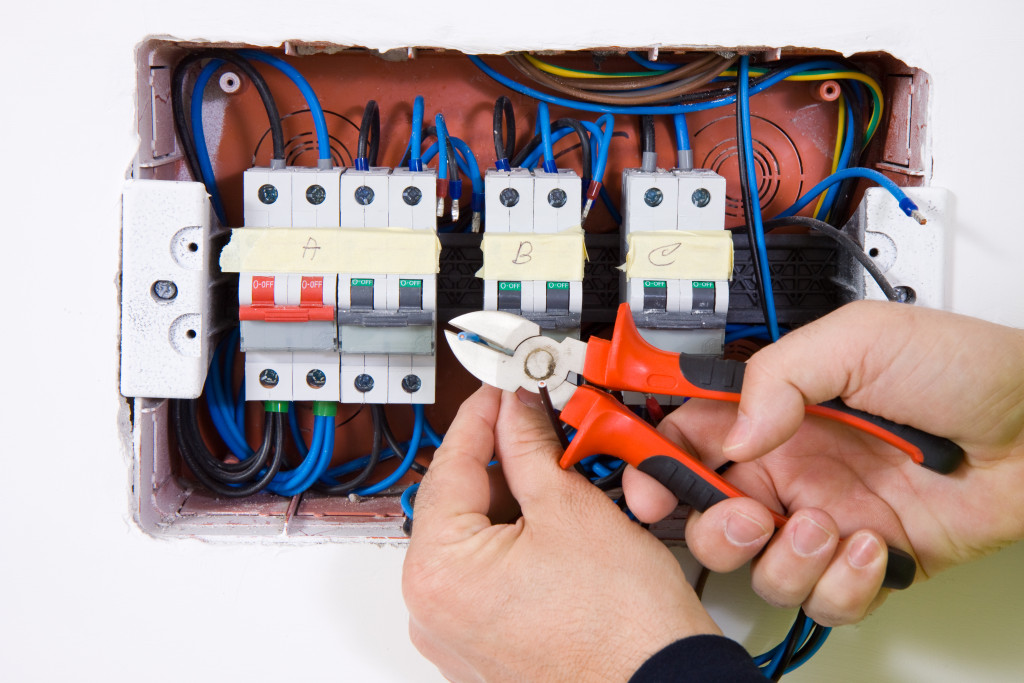Congratulations on your new home purchase! Whether this is your first home or your tenth, buying a new house is always exciting. But if you’ve purchased an older home, there are a few extra things you’ll want to do to ensure that your new house is up-to-date and safe. According to the National Association of Realtors, the median age of homes sold in the United States is 40. So, if your new home falls into this category, here are a few things you should do:
1. Check for Asbestos
Asbestos was used in various construction materials before it was banned in 1978. If your home was built before 1978, there’s a chance it contains asbestos. While asbestos isn’t necessarily dangerous if it’s undisturbed, it can be harmful if it’s disturbed and the fibers are inhaled. If you’re unsure whether or not your home contains asbestos, you can hire a professional to test it.
The test will usually involve taking a sample of the material in question and sending it to a lab for analysis. If asbestos is found, you’ll need to decide whether to remove it or leave it alone. If you choose to remove it, be sure to hire a professional trained and certified in asbestos removal. Don’t try to remove it yourself!
2. Inspect the Plumbing
Older homes often have outdated plumbing systems that may not be up to code. To avoid any problems down the line, having a professional inspect your plumbing and update it as necessary is a good idea. This may include replacing old pipes with new ones made from lead-free materials, installing low-flow toilets, and adding additional insulation to pipes that run through unheated areas of your home. You may also want to install a water filtration system to remove contaminants from your water supply.
Most older homes also have sewage systems that may not be up to today’s standards. If your home has a septic tank, it’s essential to have it cleaned and serviced regularly. A professional sewage cleanup service can inspect your system and clean it for you. They can also advise you on any necessary repairs or updates that you should make. This is especially important if you live in an area with a high water table, as your septic system may be more likely to fail.

3. Rewire Your Electrical System
Homes built before 1950 likely have an outdated electrical system incapable of handling today’s electrical needs. If you’re using appliances that weren’t around when your home was built—such as computers, microwaves, and hair dryers—you may need to update your electrical system to accommodate them. Only a licensed electrician should do this work.
You should also install ground fault circuit interrupters (GFCIs) in your home. These devices are designed to protect you from electrical shock by shutting off power to a circuit when it detects an imbalance in the current. GFCIs can be installed in outlets, circuit breakers, and panel boards. You can also buy portable GFCIs that can be plugged into any outlet.
4. Update Your Heating and Cooling System
If your home is more than 20 years old, chances are it doesn’t have an energy-efficient heating and cooling system. Not only will this be bad for the environment, but it will also cost you more money to operate. By upgrading to a newer, more energy-efficient system, you can save money on your energy bills and help reduce your carbon footprint.
When choosing a new heating and cooling system, look for ENERGY STAR-certified devices. These systems meet the strict guidelines for property energy-efficiency of the U.S. Environmental Protection Agency. Some states and utilities offer rebates and tax incentives for installing ENERGY STAR-certified systems, so check for these before you make your purchase.
5. Test for Lead-Based Paint
Like asbestos, lead-based paint can be harmful if it’s disturbed. If your home was built before 1978, there’s a good chance it contains lead-based paint. You can test for this yourself with a lead-based paint test kit or hire a professional to do it for you. Because lead-based paint can be dangerous, it’s best to leave the removal to a professional.
Try to avoid disturbing any areas of paint that may contain lead, and be sure to clean up any dust or debris that could have lead particles. If you must remove lead-based paint, wear a dust mask and gloves, and wet the area before starting to remove the paint. This will help to prevent lead dust from becoming airborne.
If you’ve just bought an older home, there are a few extra things you’ll need to do to make sure that it’s safe and up to code. These include checking for asbestos, inspecting the plumbing, and rewiring the electrical system. You’ll also need to update the heating and cooling system and test for lead-based paint. By taking these extra steps, you can ensure that your older home is safe and livable.

